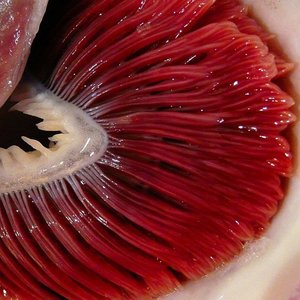Abstract
Culture of the early larval stages of many marine fish species is often characterized by high larval mortality and poor growth. Comparison of the nutritional composition of cultured live prey, such as species of rotifers and Artemia, with that of “natural” prey species, such as copepods, indicates possible deficiencies in essential micronutrients that could explain the poor performance of larvae fed on these cultured foods. Enrichment of live prey species by feeding them on artificial diets is difficult due to high leakage losses from microparticles in aqueous suspension. In this study, wax spray beads (WSB) consisting of bees wax, with or without a 5% w/w extract of a synthetic marine phospholipid (mPHL), were evaluated for their potential for delivery of watersoluble micronutrients and the antibiotic oxytetracycline (OTC) to Artemia. The micronutrient mix consisted of amino acids, vitamins and trace minerals and was based on the nutritional composition of copepods. Leaching experiments indicated that nitrogen (N) retention of WSBcontaining the micronutrient mix rapidly declined in the first 5 to 10 min of suspension in seawater; however, subsequent N losses over a 2 h period occurred at much lower rates, resulting in overall N retention efficiencies of 44% and 24% for WSB prepared with either 100% wax or 95% wax/5% mPHL, respectively. Substantial losses of labile micronutrients, such as vitamin A, vitamin E, astaxanthin, selenium, vitamin C and thiamin, occurred during WSB preparation. Furthermore, production of peroxidation products and losses of astaxanthin were greater with beads containing 5% mPHL compared with beads prepared with 100% bees wax. Artemia ingested and broke down riboflavin-containing WSB prepared with 100% bees wax and liberated riboflavin was observed in their digestive systems. Artemia fed OTC-containing WSB prepared with 100% bees wax retained OTC after purging their guts of ingested WSB. WSB may be useful in delivering water-soluble substances to Artemia as well as other marine suspension feeders capable of breaking down these beads by mechanical or enzymatic processes. The advantage of using wax as the lipid carrier, compared with phospholipid and triacylglycerol lipid types, is that it is relatively inert and will less likely react with incorporated materials to produce peroxides or result in excessive contributions to the lipid nutrition of the target organism.
Keywords
Lipid spray bead, Wax, Phospholipid, Micronutrient, Antibiotic, Oxytetracyline, Peroxidation, Artemia
Authors
C. Langdon a, A. Nordgreen b, M. Hawkyard a, K. Hamre b
a Coastal Oregon Marine Experiment Station, and Department of Fisheries and Wildlife, Oregon State University, Newport, OR 97365, USA
b National Institute of Nutrition and Seafood Research (NIFES), Post-box 2029, Nordnes, 5817 Bergen, Norwayy
Publisher
Elsevier. Aquaculture 284 (2008) 151–158
[Source Nofima. For more information please contact Reidun Lilleholt]










